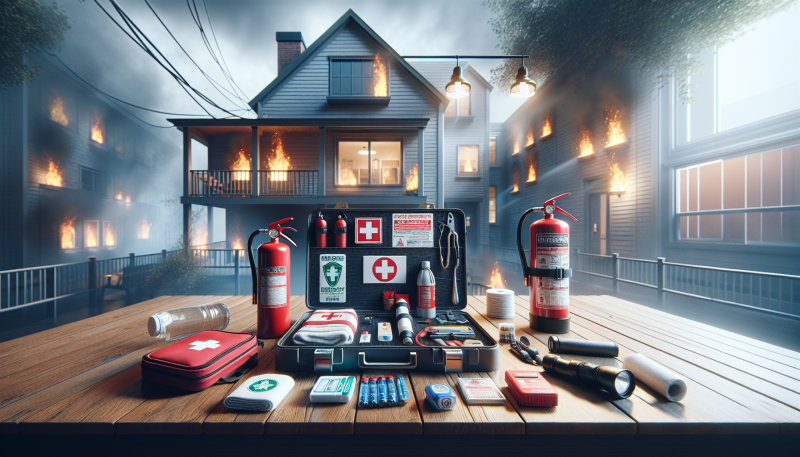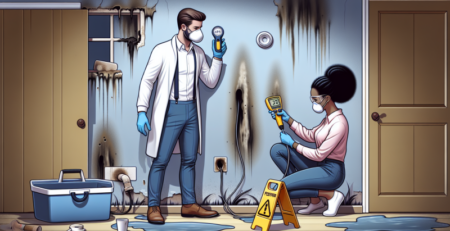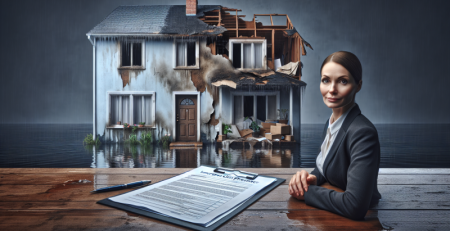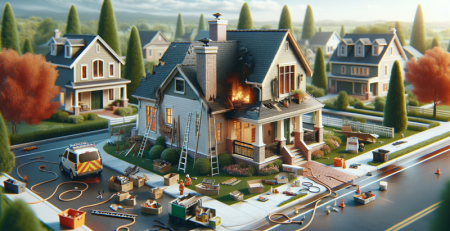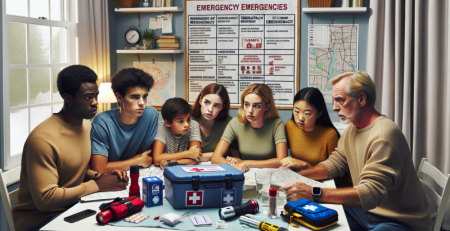Emergency Preparedness for Fire Damage
**Emergency Preparedness for Fire Damage** is a crucial topic that every homeowner should take seriously. Have you ever considered how quickly a fire can devastate your property and disrupt your life? Understanding the steps to prepare for such emergencies can make all the difference in minimizing damage and ensuring safety.
Being prepared for fire damage involves creating an emergency plan, having the right tools on hand, and knowing who to call for help. Experts recommend having a fire extinguisher accessible, smoke detectors installed, and a clear evacuation route planned. Additionally, knowing a reliable restoration service, like Kraus Restoration, can provide peace of mind during a crisis.
But preparation doesn’t stop there. It’s essential to stay informed about fire safety practices and restoration options. So, let’s delve deeper into effective strategies for emergency preparedness and discover how you can safeguard your home against fire damage. Your safety and property deserve the best protection possible!
Understanding Fire Damage
Fire damage encompasses various forms, including structural damage, smoke damage, and water damage resulting from firefighting efforts. Structural damage can compromise the integrity of a building, while smoke damage often leads to lingering odors and discoloration. Additionally, water damage from extinguishing flames can cause further complications, such as mold growth.
Statistics reveal that fire incidents occur frequently, with thousands of residential and commercial fires reported annually. Common causes include cooking accidents, electrical malfunctions, and heating equipment failures. The impact on homes and businesses can be devastating, resulting in significant financial losses and emotional distress.
Understanding fire damage is crucial for effective emergency preparedness. By recognizing the different types of damage, individuals and organizations can develop comprehensive response plans. This knowledge enables better decision-making during emergencies, ultimately minimizing losses. For more information on how to protect your property, visit our fire cleanup services. Additionally, explore our water cleanup options to address potential issues after a fire. Understanding these aspects can significantly enhance your readiness for unexpected events.
Assessing Fire Risks
Identifying fire hazards is crucial for both residential and commercial spaces. Common risks include faulty wiring, overloaded circuits, and flammable materials like paper and chemicals. Regularly inspect your environment to mitigate these dangers.
To effectively assess fire risks, use the following checklist:
- Examine electrical systems for wear and tear.
- Ensure smoke detectors are functional and up to date.
- Store flammable materials safely and away from heat sources.
- Maintain clear escape routes and ensure they are well-lit.
- Review fire extinguishers for accessibility and proper maintenance.
Additionally, familiarize yourself with local fire codes and regulations. These guidelines help ensure compliance and enhance safety measures. They often dictate the installation of smoke alarms, fire exits, and sprinkler systems. Adhering to these regulations not only protects lives but also minimizes property damage.
For more information on fire safety measures, visit our fire cleanup services. You can also explore our about page for insights into our commitment to safety.
Creating a Fire Emergency Plan
An effective fire emergency plan includes several key components. First, establish clear evacuation routes. Ensure everyone knows the quickest exits from each room. Next, designate meeting points outside the building. This helps account for all individuals after evacuation. Additionally, develop communication strategies. Use group texts or apps to keep everyone informed during a crisis.
Involving all household members or employees in the planning process is crucial. Hold meetings to discuss the plan and gather input. Encourage everyone to ask questions and share concerns. This fosters a sense of ownership and responsibility. Assign specific roles to each person, ensuring everyone knows their responsibilities during an emergency.
Regular drills are essential for reinforcing the plan. Schedule practice evacuations at least twice a year. This helps everyone become familiar with the procedures. Furthermore, update the emergency plan regularly. Changes in the household or workplace may necessitate adjustments. For more information on fire safety, visit our fire cleanup services page. Stay prepared and informed by checking our about section for additional resources.
Fire Safety Equipment and Maintenance
Fire safety equipment plays a crucial role in protecting lives and property. Essential items include smoke detectors, fire extinguishers, and sprinkler systems. When selecting equipment, consider the specific environment. For residential spaces, opt for smoke detectors that meet local codes. In commercial settings, ensure fire extinguishers are easily accessible and appropriate for the types of fires likely to occur.
Regular maintenance and testing of fire safety equipment are vital. Smoke detectors should be tested monthly, while batteries should be replaced at least once a year. Fire extinguishers require annual inspections by a professional. Additionally, sprinkler systems should undergo routine checks to ensure they function correctly.
Neglecting maintenance can lead to equipment failure during emergencies. Therefore, staying proactive is essential. For more information on fire safety measures, visit our fire cleanup services. You can also learn about our commitment to safety and quality. Lastly, for assistance with your fire safety needs, reach out through our contact page.
Preparing an Emergency Kit
An effective fire emergency kit is essential for every household. Start by including first aid supplies, such as bandages, antiseptics, and pain relievers. Next, gather important documents like insurance papers, identification, and medical records. Additionally, pack non-perishable food items and at least one gallon of water per person for three days.
To customize your kit, consider the unique needs of your family. For instance, include medications for chronic conditions or special items for infants and pets. Regularly assess your kit to ensure it remains relevant.
Moreover, keeping your emergency kit easily accessible is crucial. Store it in a designated location that all family members know. Regularly update the contents, especially food and medications, to maintain freshness. For more information on how to prepare for emergencies, visit our about page or explore our services. Being prepared can make a significant difference in a crisis.
Insurance Considerations
When preparing for potential fire damage, understanding insurance coverage is crucial. Homeowners insurance typically covers fire damage to your property and personal belongings. Renters insurance, on the other hand, protects your possessions in a rented space. Business insurance also plays a vital role, safeguarding commercial properties and assets from fire-related losses.
To choose the right policy, assess your specific needs. Consider factors such as the value of your home, belongings, and business assets. Additionally, compare different policies and their coverage limits. Look for exclusions and ensure that fire damage is explicitly included.
Documenting your possessions is essential for a smooth claims process. Start by creating a detailed inventory of your items, including photographs and receipts. Store this information in a secure location, such as a cloud service or a safe deposit box. Regularly update your inventory to reflect any new purchases. For more guidance on protecting your property, visit our about page or explore our services.
Recovery and Restoration After Fire Damage
After a fire incident, prioritize safety. First, conduct thorough safety checks to ensure the area is secure. Next, contact local authorities to report the fire and seek assistance. Once the situation is stable, secure your property to prevent further damage or theft.
The recovery and restoration process begins with hiring professionals who specialize in fire damage. They can assess the extent of the damage and develop a comprehensive restoration plan. Additionally, dealing with insurance claims is crucial. Document all damage meticulously and communicate with your insurance provider to expedite the claims process.
Emotional support is vital for those affected by fire damage. Organizations and hotlines offer counseling and resources to help individuals cope with trauma. Connecting with support groups can also provide a sense of community during recovery. For more information on our services or to learn about our company, please reach out. Remember, recovery takes time, but support is available.
Community Resources and Support
In times of fire emergencies, local and national organizations play a crucial role in providing support. The Red Cross offers immediate assistance, including shelter and supplies. Additionally, local fire departments often have resources to help residents prepare for potential fires. Engaging with community preparedness initiatives is vital. These programs foster resilience and ensure that everyone knows how to respond effectively. You can get involved by attending community meetings or volunteering with local organizations.
Moreover, training programs and workshops are available to enhance fire safety awareness. Many fire departments offer free courses on fire prevention and emergency response. These sessions equip individuals with the knowledge to protect themselves and their families. For instance, you can explore fire cleanup services that provide insights into recovery efforts. Furthermore, participating in these initiatives strengthens community bonds and promotes a culture of safety. To learn more about how to prepare your home, visit our about page. Together, we can build a safer environment for everyone.
Frequently Asked Questions (FAQs)
When you smell smoke in your home, act quickly. First, evacuate everyone immediately. Then, call emergency services to report the situation. Do not investigate the source of the smoke yourself. Regularly testing your smoke detectors is crucial. Aim to test them at least once a month. Replace batteries twice a year to ensure they function properly.
Using a fire extinguisher requires knowledge. Always remember the acronym PASS: Pull the pin, Aim low, Squeeze the handle, and Sweep from side to side. Additionally, during the holiday season, prevent fires by keeping decorations away from heat sources. Always turn off lights and unplug decorations when not in use.
Your fire emergency plan should include escape routes and a designated meeting place. Share this plan with all family members to ensure everyone knows what to do. Lastly, recovering emotionally after a fire can be challenging. Seek support from friends, family, or professionals. For more information on recovery, visit our about page. If you need assistance with fire damage, check our fire cleanup services.
Conclusion and Call to Action
In summary, preparing for fire emergencies is crucial for safeguarding your home and loved ones. Throughout this article, we discussed the importance of having a fire escape plan, maintaining smoke detectors, and creating an emergency kit. Each of these steps plays a vital role in ensuring your safety during a fire incident.
Moreover, taking proactive measures can significantly reduce the risks associated with fire damage. Regularly review your fire safety protocols and ensure your family is familiar with them. Additionally, consider attending local fire safety workshops to enhance your knowledge and preparedness.
For further information, explore our about page or check out our fire cleanup services. Remember, being prepared today can make all the difference tomorrow. Don’t wait for an emergency to take action; start planning now.
